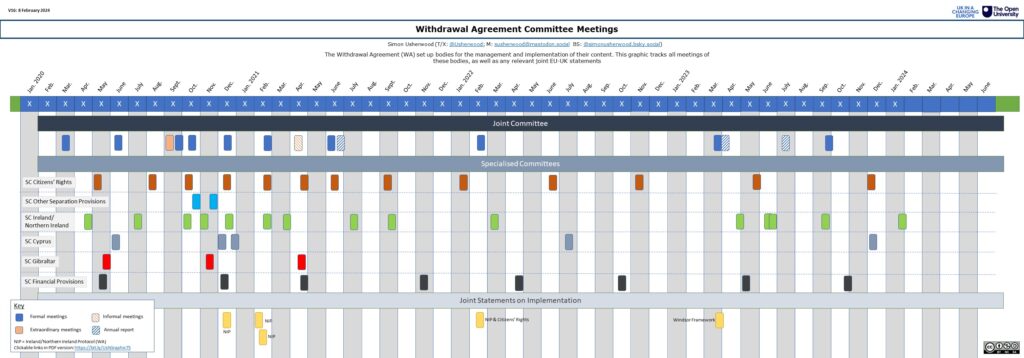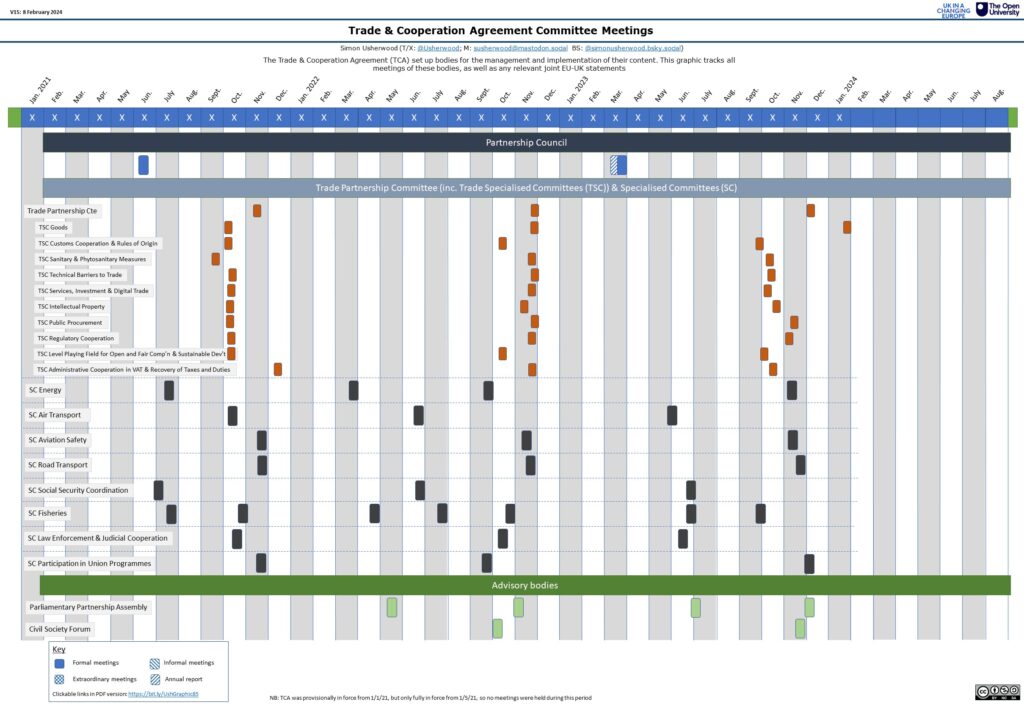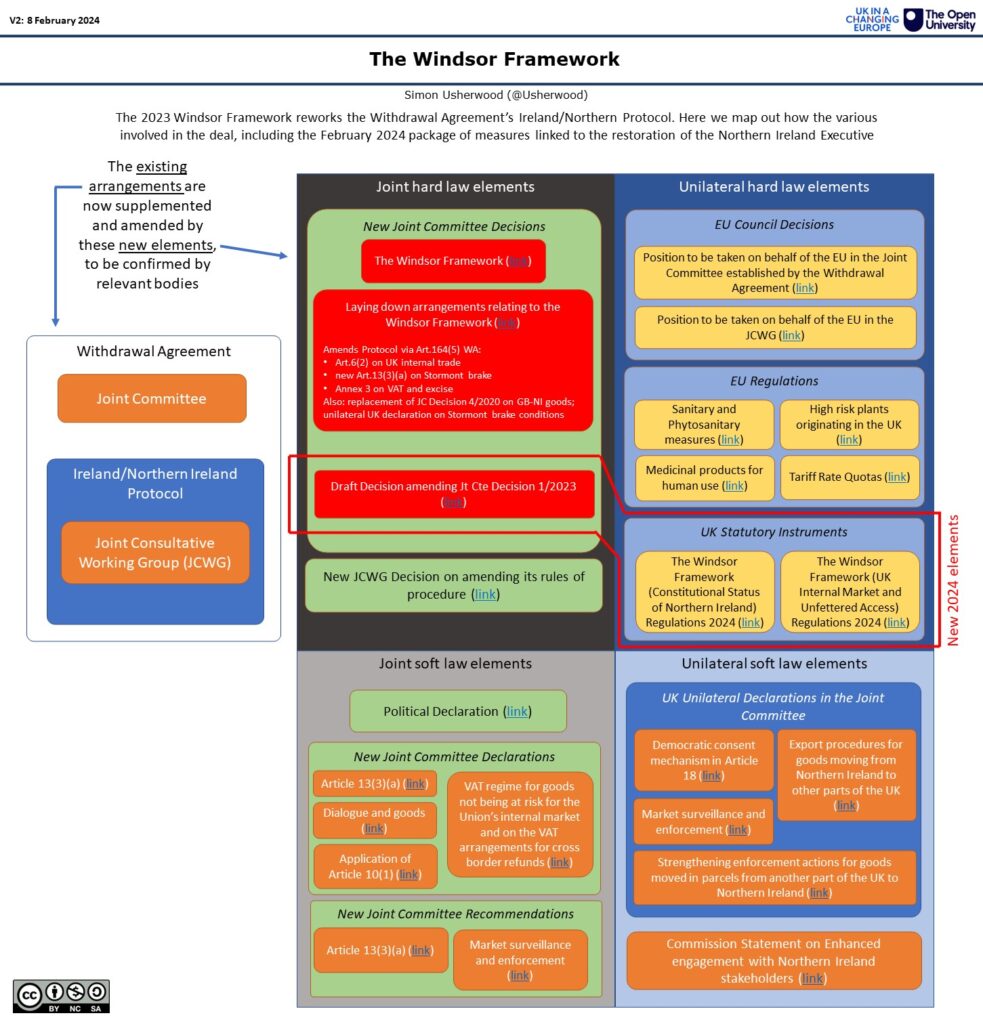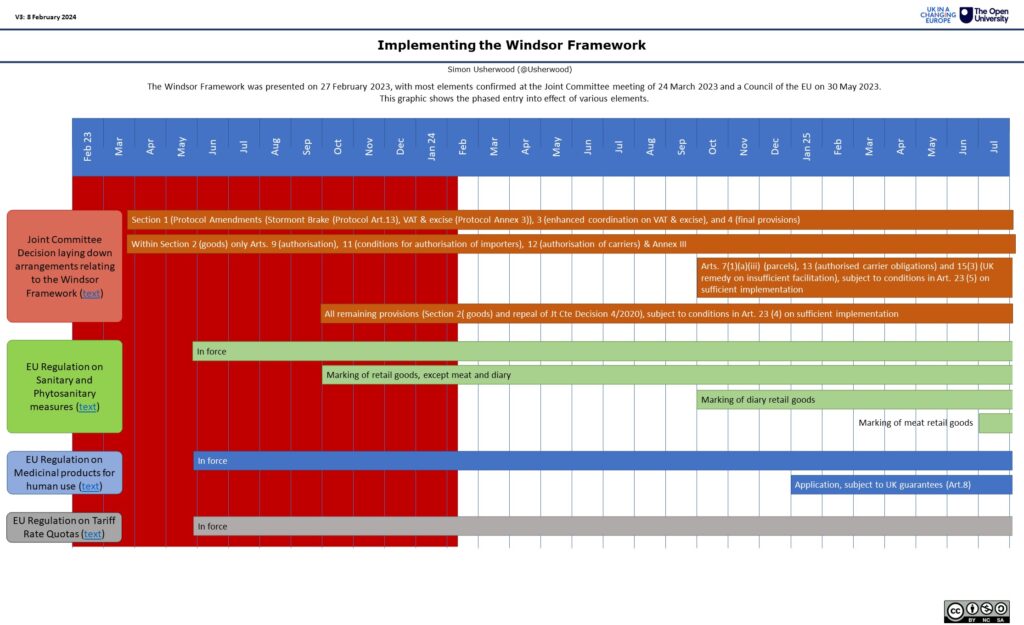Last week’s announcement of a package of measures to support the return of the Northern Ireland Assembly and Executive might not have produced much substantial change in UK-EU relations, but it has prompted me to update a number of key graphics.
For newer readers, over the past [quickly checks; sighs] eight years, I’ve been making graphics to summarise key elements of the Brexit process and of UK-EU relations. You can find the whole pile of them here, in PDF format, often with clickable links to source documents.
Everything’s on a free, shareable and reusable BY-NC-SA licence: I’d only ask that if you spot mistakes, you let me know.
Anyway, back to the matter in hand, namely the nudge I got to make sure these graphics remained up-to-date.
Starting with meetings of the Withdrawal Agreement (WA) and Trade & Cooperation Agreement (TCA) bodies, we can see that the former are getting fewer and fewer (as expected), while the latter are now in full flight (also as expected).
The autumn is thus the key point for checking in on TCA progress, although that obviously doesn’t preclude additional interactions through the relevant committees. That said, all of this still represents the bare minimum to keep relations ticking over: there’s no top-level summitry and any other interactions are sporadic at best.
The Stormont deal doesn’t change any of that. As I noted in my previous post, the package is mostly about unilateral British changes, to the point that I didn’t even see any point in updating the Stormont Brake graphic, given that the amended Act doesn’t add any meaningful weight on UK ministers to block new legislation over what was agreed last year.
As you can see below, while we add a number of new elements into the Framework, their impact is very contained and they do nothing to change the long implementation arrangements. All of which makes DUP acquiescence over this less likely to centre on their previous Protocol qualms.
The main impact of all of this is the confirmation that the WA and TCA now form the basic superstructure of UK-EU relations: with both the Conservatives and DUP now nominally on-board with the Protocol, there is minimal pressure to move off these treaties. That also colours Labour’s position, since it makes it even easier to stick on them too, rather than incur challenges should they try to move to a more comprehensive arrangement.
However, since I was in the mood to play around with Powerpoint, I also finally go to working on the impact of the Border Target Operating Model (BTOM), which I’ve rather avoided, mostly because I’m not a trade expert and all the charts in the main document looked far too daunting.
But since that’s not a good reason, I have no worked back through one of the lasting non-Northern Irish issues in relations, namely the extended uncertainty about whether and when the UK would impose controls on EU imports.
Throughout 2021 and 2022, the government kept on pushing back what had been presented as temporary easements, largely because its work on new border controls was taking much longer than expected.
The BTOM – published in October last year – does offer much more clarity on the situation. We’ve just had the first deadline of 31 January pass, with another at the end of April and then further new arrangements arriving through the back-end of this year. However, we also find some things are never happening, justified by a new risk-based approach to checks that is meant to reduce paperwork for everyone involved.
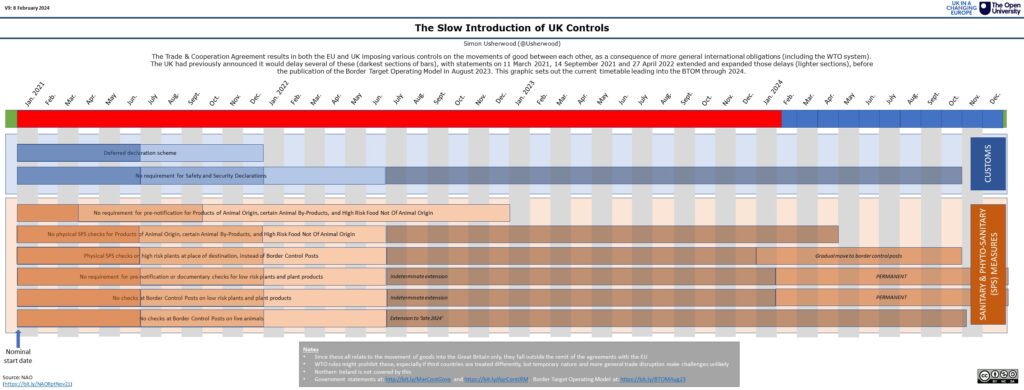
PDF: bit.ly/UshGraphic77
Whether this new calendar does happen as planned is moot right now, but certainly last month’s deadline took place on schedule. However, with ETIAS on the horizon this autumn, there’s still reason to think delays might still occur.
All of which goes to underline that relations remain – and will remain – in a dynamic situation. With both the UK and EU constantly changing policies and processes, not to mention the eternal excitements of the international system around them, while we might be out of the worst of the Johnson-era tensions, both parties to the treaties will need to maintain a close and active eye on how things are working out.

